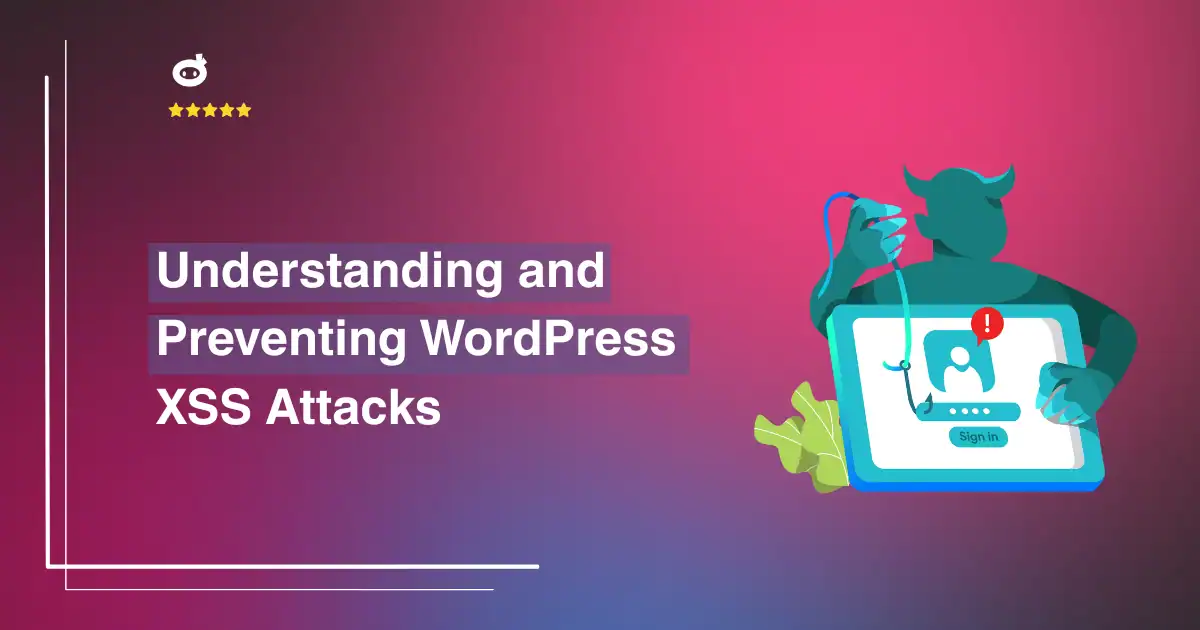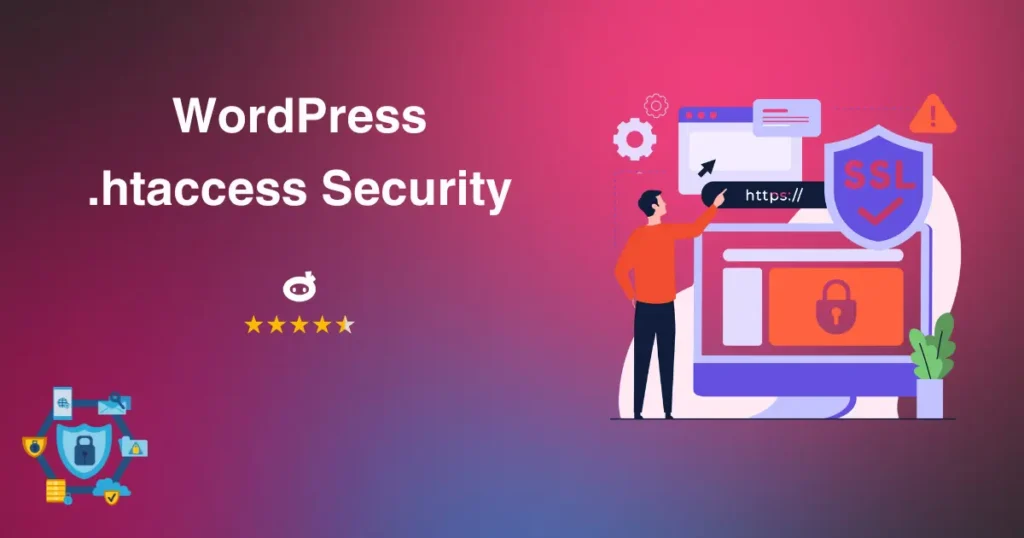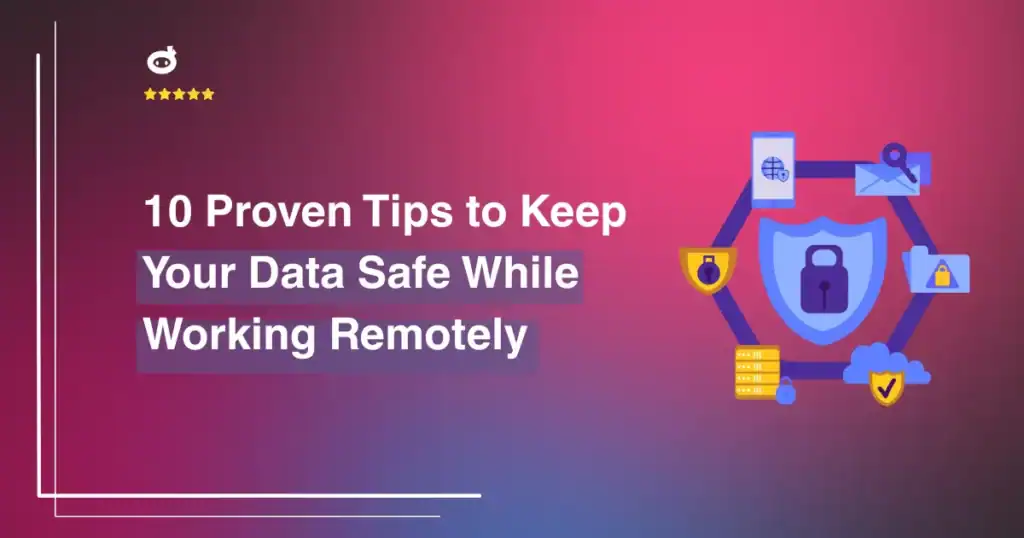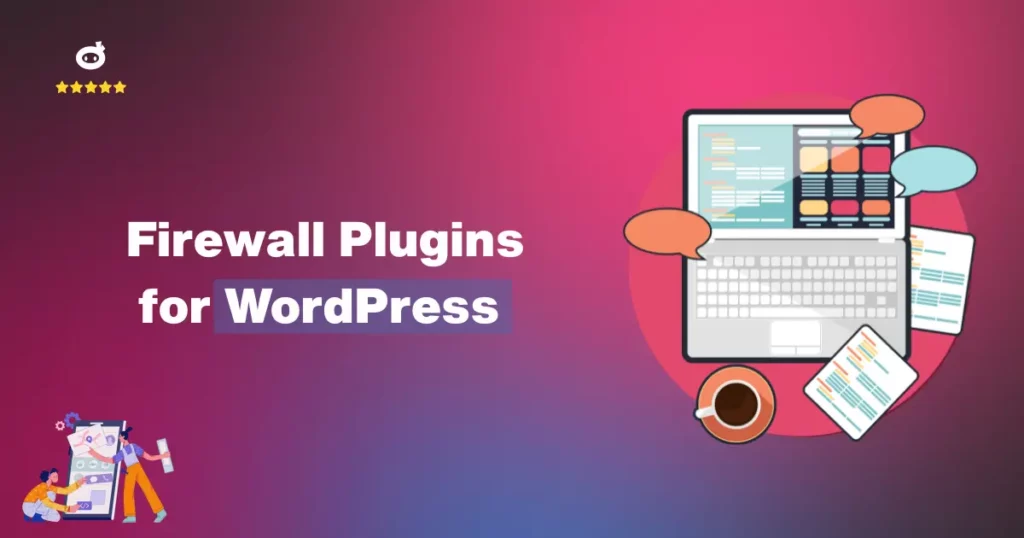Updated on
Your WordPress site could be a ticking time bomb. With over 40% of websites using WordPress, hackers are constantly looking for vulnerabilities, especially Cross-Site Scripting (XSS). This attack injects malicious scripts into your site, allowing cybercriminals to steal user data, deface pages, and even take over your website entirely.
XSS works by exploiting weak input fields, outdated plugins, and unsecured themes. Once injected, these scripts can hijack user sessions, manipulate site content, or redirect visitors to dangerous websites. A single breach can destroy your reputation and compromise sensitive information.
Protecting your site isn’t optional, it’s essential. Keep WordPress, themes, and plugins updated to close security gaps. Sanitize and validate all user inputs to block harmful scripts. Install trusted security plugins like Wordfence or Sucuri for real-time monitoring. Implement a Content Security Policy (CSP) to stop unauthorized scripts from running.
Don’t wait for an attack to strike. Take action now to fortify your WordPress site against XSS threats. Strengthen your defenses today, because one small vulnerability is all it takes to lose everything.
Contents
- 1 What is Cross-Site Scripting (XSS)?
- 2 Real-World Examples of WordPress XSS Vulnerabilities
- 3 Impact of XSS Attacks on WordPress Sites
- 4 Identifying XSS Vulnerabilities in Your WordPress Site
- 5 Leveraging Security Plugins for XSS Protection
- 6 WordPress Hardening Techniques to Prevent XSS Attacks
- 7 Conclusion
What is Cross-Site Scripting (XSS)?
Cross-Site Scripting (XSS) is a security vulnerability that allows attackers to inject malicious scripts into web pages viewed by unsuspecting users. This enables hackers to steal sensitive data, hijack user sessions, or manipulate website content. XSS exploits weaknesses in web applications by inserting harmful scripts, typically written in JavaScript, which execute when the page is loaded.
Types of XSS Attacks
XSS attacks come in various forms, each with unique implications for security. Below are the three primary types:
1. Stored XSS (Persistent XSS)
Stored XSS is a type of attack where malicious scripts are permanently embedded into a website’s database or server. When a user visits the affected page, the script executes in their browser without their knowledge.
Key characteristics:
- The malicious script remains stored on the server until removed.
- It can infect multiple users over time.
- Often exploited through comment sections, message boards, or user profiles.
Example: A hacker injects a script into a WordPress comment section. Every visitor who views the comment unknowingly executes the script, exposing their cookies or login data to the attacker.
2. Reflected XSS (Non-Persistent XSS)
Reflected XSS occurs when malicious scripts are included in a web request and then reflected back in the website’s response. This attack requires the user to take an action, such as clicking a link.
Key characteristics:
- The attack is not stored on the server and only affects users who interact with the crafted URL.
- Often spread through phishing emails, malicious ads, or search engine results.
- Attackers trick users into triggering the script execution.
Example: A user receives an email with a link containing an injected script. When clicked, the script executes in their browser, stealing login credentials or redirecting them to a fake website.
3. DOM-Based XSS
DOM-Based XSS exploits vulnerabilities in a website’s client-side JavaScript code. Instead of modifying server-side content, the attack alters the structure of the Document Object Model (DOM) in the user’s browser.
Key characteristics:
- The vulnerability exists in the client-side code rather than the server.
- The script manipulates the page dynamically without requiring a new server request.
- Harder to detect since it doesn’t involve direct server interaction.
Example: A WordPress plugin dynamically updates a webpage based on user input. An attacker injects a script into a form field, which then modifies the page’s content in real time, potentially stealing user data or redirecting them to a malicious site.
Real-World Examples of WordPress XSS Vulnerabilities
Cross-Site Scripting (XSS) attacks remain a serious threat to WordPress sites, allowing attackers to inject malicious scripts into web pages. These vulnerabilities can lead to data theft, session hijacking, and unauthorized administrative actions.
Below, we examine two recent XSS vulnerabilities that have affected WordPress and its ecosystem:
CVE-2024-4439: Stored XSS in WordPress Core (Avatar Block)
A critical stored XSS vulnerability, CVE-2024-4439, was discovered in WordPress Core versions up to 6.5.2. This flaw affected the Avatar block, a feature that displays user profile pictures.
How It Works:
- The vulnerability allowed attackers to inject malicious JavaScript into the Avatar block.
- Since WordPress stores this block’s content in the database, the script could be executed whenever a page containing the block was loaded.
- The malicious script ran in the context of the affected WordPress site, potentially giving attackers access to user data, session tokens, or even administrator privileges.
Potential Impact:
- Attackers could hijack user sessions and perform unauthorized actions.
- Administrators viewing an infected page could unknowingly execute the malicious script.
- Sites using WordPress versions 6.5.2 and earlier were vulnerable until an official patch was released.
Mitigation:
- Update WordPress Core to the latest version immediately.
- Implement Content Security Policy (CSP) headers to restrict script execution.
- Regularly audit and sanitize user input to prevent script injection.
CVE-2025-24752: Reflected XSS in Essential Addons for Elementor
A severely reflected XSS vulnerability, CVE-2025-24752, was found in the Essential Addons for Elementor plugin, which is used by millions of WordPress sites.
How It Works:
- The plugin improperly handled URL parameters, allowing attackers to craft malicious URLs.
- If a user (such as an admin or editor) clicked the malicious link, the script executed in their browser.
- Unlike stored XSS, reflected XSS requires user interaction, but it can still be highly dangerous, especially in phishing attacks.
Potential Impact:
- Attackers could steal login credentials or session cookies.
- Users clicking malicious links could unknowingly compromise their accounts.
- The issue was particularly severe because of the plugin’s widespread use.
Mitigation:
- Update the Essential Addons for Elementor plugin to the latest secure version.
- Avoid clicking suspicious links, especially those containing query parameters.
- Use a Web Application Firewall (WAF) to detect and block malicious requests.
Website administrators must stay vigilant by updating software, enforcing security policies, and using security plugins to detect and prevent XSS attacks. By understanding these real-world vulnerabilities, WordPress users can better protect their sites and data.
Impact of XSS Attacks on WordPress Sites
Cross-Site Scripting (XSS) attacks are a serious threat to WordPress websites, enabling hackers to manipulate content, steal user data, and harm search rankings. These attacks exploit vulnerabilities in unsecured input fields, injecting malicious scripts that execute when users interact with the site. \
Below are the most critical ways XSS attacks can impact WordPress sites:
1. Data Theft: Compromising Sensitive Information
XSS attacks can steal valuable data, including:
- User credentials – Hackers can hijack login sessions and steal usernames and passwords.
- Financial details – E-commerce sites risk exposure of credit card information.
- Personal data – Contact details and other sensitive information can be extracted.
This breach not only puts users at risk but also leads to legal consequences under data protection laws like GDPR, damaging a brand’s credibility.
2. SEO Damage: Search Engine Penalties
Google and other search engines quickly penalize websites infected with malicious scripts. XSS attacks can:
- Inject spammy links, promoting scams or illegal services.
- Redirect visitors to phishing sites, increasing bounce rates and reducing credibility.
- Flag the site as unsafe, leading to search result warnings and traffic drops.
Recovering from an SEO penalty requires costly and time-consuming cleanups while regaining lost rankings can take months.
3. Site Defacement: Altering Website Appearance
Attackers often use XSS to replace content with offensive messages, images, or propaganda. This can:
- Damage brand reputation, making visitors lose trust in the site.
- Disrupt functionality, breaking layouts and making pages unusable.
- Cause browser blacklisting, warning users that the site is unsafe.
For businesses, this results in lost revenue, credibility, and increased recovery costs.
Through XSS attacks, hackers can inject scripts that execute admin-level commands, leading to:
- Installation of backdoors, allowing persistent access even after the attack.
- Creation of fake admin accounts, making it difficult to regain control.
- Site-wide changes, including plugin modifications or malicious redirects.
If a hacker gains admin control, restoring the site can be extremely challenging without full backups or security expertise.
5. Malware Distribution: Spreading to Visitors
XSS attacks can turn WordPress sites into malware distribution hubs, infecting visitors’ devices by:
- Embedding malicious downloads, tricking users into installing harmful software.
- Spreading ransomware, encrypting files and demanding payment for recovery.
- Triggering browser exploits, compromising unprotected visitors.
This can lead to legal liabilities, loss of customer trust, and domain blacklisting.
XSS attacks are not just minor annoyances, they can have lasting consequences on security, SEO, and brand reputation. Regular security audits, input validation, and security plugins can help mitigate these risks and keep WordPress sites safe from cyber threats.
Identifying XSS Vulnerabilities in Your WordPress Site
Cross-Site Scripting (XSS) attacks pose a serious security risk to WordPress sites, allowing hackers to inject malicious scripts that can steal data or hijack user sessions. Identifying vulnerabilities early can prevent exploitation and ensure a secure website.
Security Scans: Proactive Detection of XSS Risks
Regular security scans help uncover hidden vulnerabilities before attackers exploit them. By using security plugins and tools designed for WordPress, you can systematically scan your website and fix weak spots.
Essential Security Plugins for XSS Detection
- Wordfence Security – Offers firewall protection and malware scanning to detect XSS threats.
- Sucuri Security – Provides site integrity monitoring, malware detection, and security hardening.
- iThemes Security – Strengthens site defenses with vulnerability scans and real-time threat detection.
- MalCare – Automated malware removal and firewall protection with deep scanning capabilities.
Best Practices for Security Scans
- Schedule Regular Scans: Run automated scans weekly to detect potential security threats early.
- Enable Real-Time Monitoring: Some plugins offer continuous security checks to alert you of any suspicious activity immediately.
- Review Scan Reports: Analyze reports carefully to identify and fix vulnerabilities before they become a serious risk.
Code Reviews: Identifying XSS in Custom Code, Plugins, and Themes
A thorough review of your WordPress codebase can help pinpoint vulnerabilities that might go unnoticed by automated scanners. This includes inspecting custom themes, plugins, and core files for insecure coding practices.
Key Areas to Inspect for XSS Risks
- User Input Handling: Ensure that all user input fields (comments, forms, search boxes) are properly sanitized and validated.
- Database Queries: Use prepared statements and parameterized queries to prevent injection attacks.
- JavaScript Execution: Avoid inline JavaScript and ensure scripts are securely loaded.
- Third-Party Plugins and Themes: Always download from trusted sources and check for frequent updates.
Code Review Best Practices
- Sanitize and Escape Data: Use esc_html(), esc_attr(), and wp_kses() to prevent malicious scripts from executing.
- Use Nonces for Form Security: Implement WordPress nonces to validate form submissions and prevent CSRF attacks.
- Limit User Permissions: Restrict script execution permissions to prevent unauthorized changes.
Implement a Web Application Firewall (WAF)
Adding a Web Application Firewall (WAF) provides an extra layer of security by filtering and monitoring HTTP traffic between a website and the internet. A WAF can help block malicious scripts before they reach your site, reducing the risk of XSS attacks.
Recommended WAF Solutions
- Cloudflare WAF – Offers robust protection against XSS, SQL injection, and other online threats.
- Sucuri WAF – Provides real-time threat intelligence and automatic blocking of malicious traffic.
- Astra Security WAF – Analyzes traffic patterns and prevents malicious code execution.
By combining regular security scans, detailed code reviews, and a Web Application Firewall, you can effectively minimize XSS vulnerabilities and enhance the security of your WordPress site. Prioritizing proactive security measures ensures a safer experience for both site administrators and users.
Leveraging Security Plugins for XSS Protection
Cross-Site Scripting (XSS) attacks pose a serious risk to WordPress websites, allowing hackers to inject malicious scripts and compromise user data. One of the most effective ways to protect your website from XSS attacks is by leveraging security plugins. Three of the most reliable options are Wordfence, Jetpack, and Sucuri Security, all of which offer robust features tailored for XSS protection.
Wordfence: Comprehensive XSS Protection
Wordfence is one of the most powerful security plugins for WordPress. It provides multiple layers of protection against XSS attacks through its advanced firewall and real-time threat detection system.
Key XSS Protection Features:
- Web Application Firewall (WAF): Filters and blocks malicious requests before they reach your site.
- Malware Scanner: Detects and removes XSS vulnerabilities in themes, plugins, and core files.
- Real-Time Threat Intelligence: Updates security rules regularly to prevent emerging XSS attack techniques.
- Two-Factor Authentication (2FA): Adds an extra security layer to prevent unauthorized access.
With over four million active installations, Wordfence remains a trusted choice for website owners looking for a strong defense against XSS and other cyber threats.
Jetpack: Firewall and Threat Prevention
Jetpack is another excellent security plugin known for its built-in firewall, which effectively blocks XSS attack attempts. It offers real-time monitoring and automated security measures to safeguard your WordPress website.
Notable XSS Protection Features:
- Application-Level Firewall: Prevents harmful scripts from executing on your website.
- Downtime Monitoring: Alerts you immediately if your site is compromised.
- Brute Force Attack Protection: Blocks suspicious login attempts, reducing the risk of XSS exploits.
- Automated Security Scanning: Identifies and resolves vulnerabilities before attackers can exploit them.
Jetpack has successfully prevented millions of attacks, making it a valuable addition to your WordPress security arsenal.
Sucuri Security: Website Protection & Monitoring
Sucuri Security is another top-tier plugin that provides comprehensive protection against XSS attacks. It focuses on monitoring, detection, and proactive defense mechanisms.
Key XSS Protection Features:
- Cloud-Based Web Application Firewall: Blocks malicious traffic before it reaches your site.
- Security Activity Monitoring: Tracks changes to files and detects suspicious activity.
- Blacklist Monitoring: Alerts you if your site is flagged by search engines for security issues.
- Intrusion Detection System (IDS): Detects and blocks malicious scripts attempting to exploit vulnerabilities.
Sucuri Security is widely recognized for its strong defense capabilities, making it an essential security tool for any WordPress site.
Enhancing Security Beyond Plugins
While security plugins offer robust XSS protection, additional best practices can further strengthen your website:
- Regular Updates: Always keep WordPress core, themes, and plugins up to date.
- Content Security Policy (CSP): Restricts the execution of unauthorized scripts.
- Sanitization & Validation: Ensure user input is sanitized to prevent script injections.
- Secure Hosting: Choose a hosting provider with built-in security features.
By combining these plugins with proactive security measures, you can significantly reduce the risk of cyber threats and maintain a safe browsing experience for your visitors.
WordPress Hardening Techniques to Prevent XSS Attacks
WordPress is a powerful and widely used platform, but its popularity also makes it a target for cyber threats like Cross-Site Scripting (XSS). Implementing security measures can help protect your website from these attacks. Below are three key techniques to enhance WordPress security:
1. Disable File Editing
By default, WordPress allows administrators to edit theme and plugin files from the dashboard. While convenient, this feature can be exploited by attackers if they gain access to your admin panel.
How to Disable:
Add the following line to your wp-config.php file:
define(‘DISALLOW_FILE_EDIT’, true);
- This prevents unauthorized code modifications and reduces the risk of injecting malicious scripts.
2. Implement a Content Security Policy (CSP)
A Content Security Policy (CSP) restricts the sources from which a site can load scripts, reducing the chances of malicious code execution.
- Steps to Set Up CSP:
- Modify your .htaccess file or server configuration.
- Add a CSP header specifying allowed content sources.
- This ensures scripts only load from trusted sources, blocking unauthorized injections.
Example of a CSP header:
Content-Security-Policy: default-src ‘self’; script-src ‘self’ ‘https://trusted-cdn.com‘;
3. Limit User Permissions
Restricting user roles and permissions minimizes security risks by ensuring only necessary access is granted.
- Best Practices:
- Assign Administrator roles only to trusted individuals.
- Use the Editor role for content management without backend access.
- Assign Contributor or Subscriber roles for minimal privileges.
- Install plugins like User Role Editor to customize permissions effectively.
By implementing these measures, you significantly reduce the risk of XSS attacks and other security threats. Strengthening WordPress security requires proactive efforts, but these simple steps go a long way in safeguarding your website.
Conclusion
Cross-Site Scripting (XSS) attacks are among the most dangerous threats to WordPress websites, allowing hackers to inject malicious scripts that compromise security and user trust. Ignoring this risk can lead to data breaches, defaced pages, and loss of credibility.
To protect your website, take a proactive approach. Regularly update WordPress, themes, and plugins to fix vulnerabilities. Use security plugins like Wordfence or Sucuri for real-time threat detection. Implement input validation and sanitization to block harmful scripts before they execute. Strengthen security with Content Security Policy (CSP) headers and limit administrative access to prevent unauthorized changes.
Website security isn’t a one-time task, it’s an ongoing commitment. Stay informed about new threats, audit your site regularly, and enforce best practices. A secure website not only protects your data but also builds user confidence.
Take action today. Strengthen your WordPress security, prevent XSS attacks, and ensure a safe browsing experience for your visitors. Your website’s safety is in your hands, don’t leave it to chance.
Written by Lars Koudal











